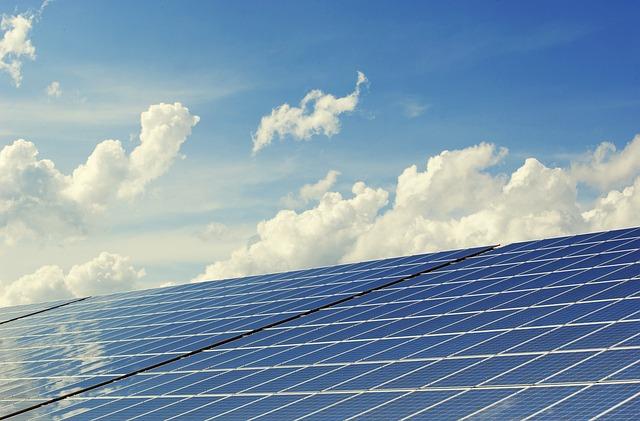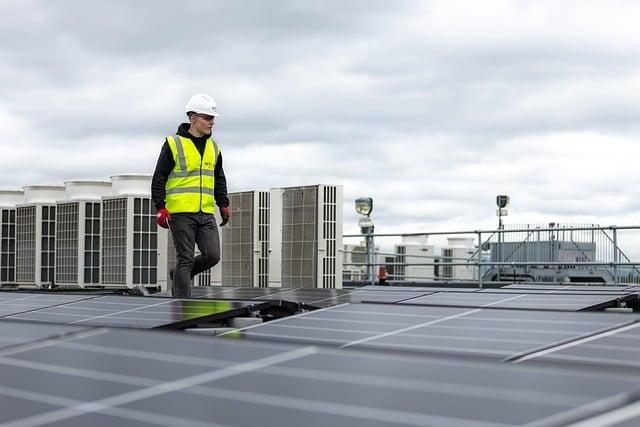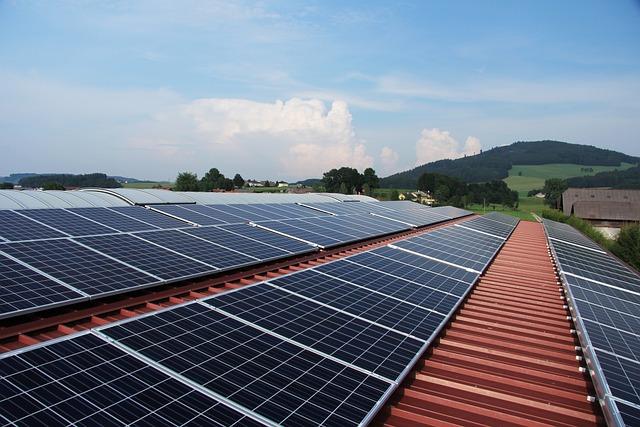- Introduction to Offshore Solar Arrays
- Benefits of Offshore Solar Arrays
- Challenges and Limitations
- Technological Advancements in Offshore Solar
- Future Potential for Offshore Solar Arrays
- Conclusion
- FAQs
- References
Introduction to Offshore Solar Arrays
Offshore solar arrays are an innovative solution that leverages the vast, untapped ocean spaces to generate clean energy. In response to land scarcity and increasing demand for renewable energy, these floating or submerged platforms provide a perfect way to harness solar power on oceans, seas, and lakes.
This article will delve deeper into the key benefits of offshore solar arrays and the various challenges they face. We’ll also explore technological advancements that aim to boost their efficiency and potential scale-up, along with a detailed look at what the future holds for this burgeoning field.
The rising demand for clean energy, coupled with rapidly advancing technology, positions offshore solar as an exciting frontier in the renewable energy space. Let's now break down the intricacies of offshore solar arrays and how this technology is evolving toward commercialization.
Benefits of Offshore Solar Arrays

(Image: Pixabay/@jamal39)
Offshore solar presents various environmental and economic benefits that distinguish it from traditional land-based solar farms. Below we explore the key advantages that make this technology alluring and transformative for energy production:
1. Efficient Space Utilization
As urban areas expand and agricultural land becomes increasingly scarce, there is less room for large-scale solar farms. Offshore locations offer underutilized space where solar panels can float freely. As a result, countries without much usable land have an alternative path to renewable energy.
2. Reduced Conflicts Over Land Use
A common limitation faced by many land-based solar farms is competition with agriculture, real estate, or conservation projects. Offshore installations bypass this issue entirely, reducing public resistance and the logistical complications tied to securing large land areas onshore.
3. Potential for Greater Efficiency at Sea
Bodies of water offer unique advantages for solar systems. Water helps reduce heat buildup on solar cells, allowing them to operate more efficiently compared to similar arrays installed on land. The proximity to large water masses also improves reflectiveness, which might augment overall power output.
4. Environmental Sustainability
With the right engineering, offshore solar structures can coexist harmoniously with local ecosystems, offering an eco-friendly alternative to fossil fuels without disturbing terrestrial habitats. Due to living on water, these arrays can minimize impacts on wildlife migration patterns and biodiversity.
Challenges and Limitations

(Image: Pixabay/@Mohamed_hassan)
Though offshore solar arrays come packed with advantages, the road ahead is far from smooth. A host of challenges must be managed before their maximum potential can be realized.
1. Harsh Marine Environments
Offshore locations expose solar infrastructure to severe weather conditions such as high winds, saltwater corrosion, and damaging ocean currents. This not only affects the durability of the setup but may also result in higher maintenance costs.
2. High Installation and Maintenance Costs
Compared to onshore solar farms, deploying solar arrays in marine environments presents significantly higher expenses. The logistical effort required to transport materials and set up the functional infrastructure, combined with the tough engineering standards needed to survive the marine environment, drive up installation costs.
3. Distance From Shore-Based Infrastructure
Electricity may need to be transmitted over long distances to reach energy grids built onshore. Even with subsea cabling solutions, there are added complexities linked to efficient power transmission to homes and businesses spread across cities and towns.
4. Regulatory and Environmental Concerns
Navigational routes, marine life preservation, fishing rights, and tourism considerations pose significant hurdles when it comes to attaining permissions for offshore projects.
Technological Advancements in Offshore Solar

(Image: Pixabay/@andreas160578)
Pioneering efforts to overcome the above challenges have given rise to new technologies aiding the large-scale commercialization of offshore solar arrays.
1. Floating Solar Platforms
Innovations involving modular floating platforms made from resilient materials like polyethylene ensure that panels remain afloat safely. These designs resist corrosion and can be easily expanded by adding additional modules.
2. Self-Cleaning Solar Panels
One major issue for solar installations is the accumulation of salt and debris. Recent developments test self-cleaning coatings that repel water, dirt, and salt to keep panel surfaces clear and fully operational, particularly important for sea-based systems.
3. Hybrid Approaches
Some experimental projects merge solar arrays with existing offshore wind farms to maximize energy capture in one location. By utilizing shared infrastructure like undersea cables, hybrid setups reduce total building costs and environmental concerns.
4. Conductive Materials Improvements
Ongoing research into next-gen conductive and semiconductive materials aims to improve solar conversion efficiency and lower production prices. This could eventually make marine environments equally viable as terrestrial environments for solar power generation.
Future Potential for Offshore Solar Arrays

(Image: Pixabay/@This_is_Engineering)
Looking forward, the possibilities for offshore solar arrays seem vast. As technology, policy frameworks, and funding initiatives converge, several optimistic projections have emerged for the future of oceanic solar power production.
1. Growing Demand for Renewable Energy
Sustainability goals, such as net zero emissions, are pushing nations worldwide toward avenues like offshore wind and solar. With water covering roughly 71% of the Earth’s surface, there is immense potential for large-scale solar farming that could take some pressure off congested land resources.
2. Partnerships with Oil & Gas Firms
Many oil and gas giants are eyeing the offshore solar industry, seeing opportunities to repurpose aging oil rigs and subsea pipelines. These firms bring decades of experience in deploying oceanscale infrastructure, giving hope that joint ventures could expedite the growth of offshore solar power fields.
3. Reduction of Carbon Footprint
The more offshore solar arrays proliferate, the larger the impact they will have on global carbon footprint reduction efforts. Today, many promising projects are in developmental phases, but within the next decade, they may be powerful drivers of large-scale energy transitions.
4. Technological Maturity and Economies of Scale
As solar manufacturing costs generally decrease every year and storage technologies advance, we could witness a rapid deployment of offshore arrays across the globe in the near future, radically altering the energy landscapes of key coastal regions.
Conclusion
Offshore solar energy is a fast-emerging field with plenty of potential benefits and challenges. While there are still obstacles to deploying viable large-scale offshore array systems, the progress is notable. Developing the necessary technology and tackling regulatory hurdles could signify a paradigm shift in how we perceive renewable energy production.
With continuous innovation, collaborative efforts, and strong governmental support, offshore solar arrays represent a promising asset that may significantly contribute to meeting the world’s clean energy needs over the coming decades.
FAQs
What is an offshore solar array?
An offshore solar array refers to a collection of solar panels placed on bodies of water, such as oceans or lakes, to harness solar energy and convert it into electricity.
Why are offshore solar farms advantageous?
Offshore solar farms free up valuable land space, potentially provide greater efficiency due to cooling from water bodies, and avoid conflicts related to land use for agriculture or housing.
What challenges do offshore solar arrays face?
Key obstacles include harsh marine conditions, high installation/maintenance costs, distance from shore-based infrastructure, complex regulatory approvals, and environmental factors affecting marine life.
Are floating solar arrays different from traditional ones?
Yes. Floating solar arrays are specifically designed to operate on water bodies, using modular floating platforms and other marine-hardened technologies to withstand ocean conditions.

